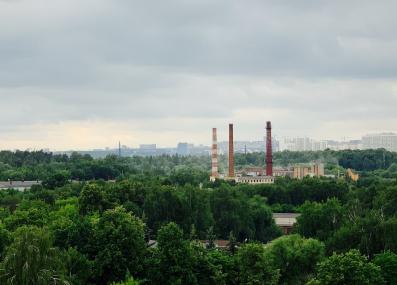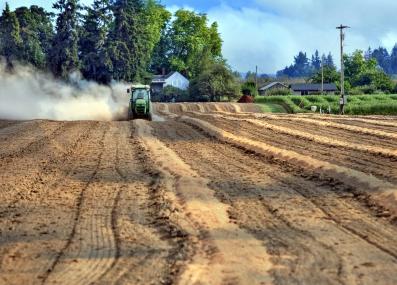Have a question?
Is there a danger that pumping liquid carbon dioxide underground could have the same negative impacts as fracking?
Pumping carbon dioxide deep underground can cause earthquakes under certain conditions, but there are ways to prevent this.
Updated October 6, 2025
Because the main cause of climate change is too much carbon dioxide (CO2) in the atmosphere, one idea to fight it is to capture CO2 and store it underground. There are a few operations in the world that already do this, by capturing CO2 through a chemical process, condensing the gas into liquid form, and then injecting it deep underground. This process is known as “geologic sequestration,” because the CO2 is stored (“sequestered”) in rock.
While geologic sequestration of CO2 is not yet common, it is similar to a more common process in the oil and gas industry: wastewater injection. Fracking, or “hydraulic fracturing,” is used to collect oil or natural gas contained in rocks underground. To frack, drillers inject a mixture of water, sand and chemicals into a rock layer and break it apart, but some of the water-sand-chemical mixture flows back up the well. This wastewater is separated from the oil and is often injected back underground at a different site.
Under certain conditions, injecting this wastewater underground can cause earthquakes. Oklahoma, for example, experienced a surge in earthquakes in the 2010s due to a large amount of wastewater being injected underground.1 Once injected into an underground well, the fluid raises the pressure in the surrounding rocks and aquifers. If these wells are near a fault line, the pressure within the fault can also increase, moving around the rocks and causing an earthquake—just like the added pressure of air on an air hockey table can move around the puck.2
Geologic sequestration is basically the same process as wastewater injection, and it has also caused earthquakes at early test sites.
But while both of these injection processes can and have triggered earthquakes, it’s not common. "Most wastewater is injected without causing any earthquakes at all," says Bradford Hager, Associate Director at MIT’s Earth Resources Laboratory and a professor of earth sciences who researches human-made earthquakes. "[Earthquakes] can be a big problem, but they are a tractable problem. The big thing which determines whether injecting fluids causes earthquakes or not is basically the geology that you're injecting into."
Hard rocks—like granite, for example—are hard and brittle, making them prone to break when liquid is injected into them. These rocks are more likely to break than softer rock, potentially triggering earthquakes. According to Hager, the most successful geologic sequestration operations inject into soft sedimentary rock formations, like shale or sandstone, which are more permeable and can absorb the added liquid without breaking.
There are two main strategies to prevent earthquakes in carbon storage projects, adds Ruben Juanes, an MIT professor of civil and environmental engineering who studies geologic sequestration. The first is to choose a low-risk site, and then monitor it carefully with a network of sensors that identify signs of earthquakes early, so you can adjust or stop the injection of CO2 if warning signs arise.
“The other way is to inject in geologic settings in which seismicity simply cannot occur,” he says.
According to Juanes, there are many such sites around the world, especially in shallow offshore areas like the Gulf of Mexico, the North Sea, and parts of the Indian Ocean. These places are characterized by younger sedimentary rock that hasn’t been fully compressed and hardened (or “lithified”). “The materials are very compliant, very pliable,” says Juanes. “You have sequences of sands and shales that have been only poorly consolidated and essentially unlithified, and behave more like molding clay would behave.” While the increased fluid pressure from CO2 injection can still cause faults in these formations to slip, they slip gradually, unlike the sudden motion in brittle rocks that radiates seismic energy and causes earthquakes.
There are other potential risks to storing CO2 in poorly chosen geological formations. In sites where a brittle layer of rock sits above the aquifer that contains the CO2, pressure from the injected liquid could cause the rocks above to crack, allowing the CO2 to seep out back into the atmosphere. It’s also possible that CO2 could leak into drinkable groundwater if injected at shallow depth near an aquifer. According to Hager, both earthquakes and leaks from CO2 injection can be managed by avoiding sites near faults in caprocks and by properly mapping sites near drinking water.
"I want to be clear that there are risks," he says, "but there are risks to everything, and the risks for continuing to emit carbon dioxide into the atmosphere without taking it out far outweigh the risks of putting the CO2 underground."
Thank you to Barbara Ann Wilder of Wilmington, North Carolina, for the question. You can submit your own question to Ask MIT Climate here.
Submit your own question to Ask MIT Climate
Get the latest from Ask MIT Climate monthly in your inbox
1 United States Geological Survey: "Oklahoma has had a surge of earthquakes since 2009. Are they due to fracking?" Accessed April 21, 2021.
2 United States Geological Survey: "How does the injection of fluid at depth cause earthquakes?" Accessed April 21, 2021.










